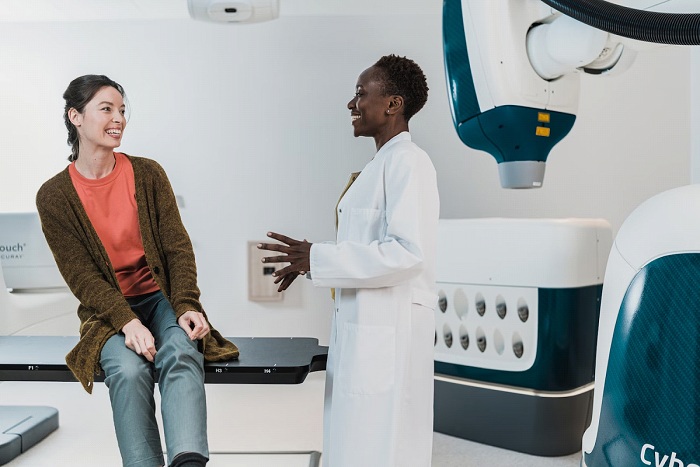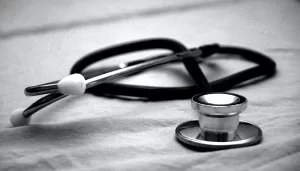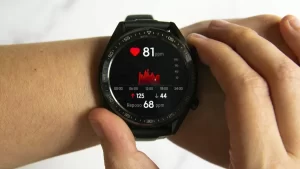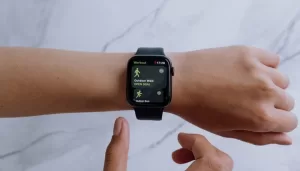What Healthcare Professionals Should Know About the Internet of Bodies (IoB)

You are likely familiar with the Internet of Things concept. And you won’t be surprised to learn that the Internet of Bodies, or IoB for short, is part of the larger IoT family.
In this article, we’ll thus be talking about devices that monitor patients’ vital signs and behavior and use this data to make intelligent recommendations. For your convenience, we’ll exclude mobile applications like sleep cycle and period trackers from the IoB classification since these apps do not require dedicated hardware apart from users’ smartphones.
As a healthcare professional, how can you benefit from using IoB devices in your diagnostic, treatment, and post-treatment care workflows?
The Internet of Bodies: Definition, Examples, and Use Cases
What is the Internet of Bodies?
Connected devices that fall under the IoB umbrella should be able to collect behavioral, biometric, and or health data. For this, your patients need to wear them on the body. More advanced IoB solutions — think smart insulin pumps and ingestible sensors — do not merely collect information but also alter bodily functions. That’s why medical workers insert such devices directly into a patient’s system.

Source: Pexels
Companies that provide the Internet of Things consulting services single out several technology components that allow IoB systems to gather, exchange, analyze, and visualize patient data:
- Physical devices. Equipped with embedded software and various sensors, the hardware tier of IoB products is responsible for measuring your patients’ blood pressure, oxygen and glucose levels, step count, and other parameters. Depending on their computing power, IoB devices can process and store data locally or pass it over to gateway devices and remote servers.
- Wireless or hybrid networks. IoB networks use data and networking protocols like MQTT, Bluetooth, BLE, and Wi-Fi to help devices exchange information with each other, gateways, and servers. The networking tier also handles the device identification and data encryption processes.
- When applied to IoB, the infrastructure term may denote either the back-end software supporting the gadgets’ business logic or a team of professionals monitoring IoB systems’ performance.
- Using mobile or web applications, or even voice assistants like Alexa, healthcare workers and patients can operate IoB products, request the results of sensor data analysis, and integrate the devices with other hardware and apps.
The Internet of Bodies Product Examples
Although consumer devices like fitness trackers, pill dispensers, hearing aids, and smart baby cribs comprise the lion’s share of modern IoT healthcare solutions, certain types of IoB systems are deployed exclusively in medical settings. These include:
Smart hospital systems:
- Patient and staff identification systems enhanced with fingerprint, iris scanning, voice, and facial recognition technologies
- Smart hospital beds that monitor patients’ vital signs round the clock
- Point-of-care (POC) diagnostic equipment
- Stationary medication dispensing systems
- Integrated systems comprising various IoB solutions for patient care (on-premises and remote)
Implantable and ingestible devices
- Artificial organs and organ systems, including artificial retina implants, cochlear implants, heart implants, and artificial pancreas systems, among others
- Connected prosthetic limbs
- Digital pills that track medication intake and help conduct non-invasive diagnostic procedures
- Devices connecting the human brain to external technology systems; this IoB category includes brain-computer interfaces (BCI), seizure monitors, and deep brain stimulation solutions.
How IoB Solutions Improve Medical Care
The Internet of Bodies has proven transformational for many industries, from professional sports to education. But it’s healthcare workers who benefit from the novel technologies the most:
- Continuous patient monitoring. Using sensor and camera-based IoT devices, IoB systems enable caregivers to detect even the smallest changes in a patient’s physiological data, allowing them to anticipate any decline and take immediate action in emergencies. Additionally, IoB technologies help reduce the need for physical interactions between patients and medical personnel, which can prevent the spread of contagious diseases.
- Effective diagnosis. IoB offers a variety of tools for non-invasive and highly efficient medical diagnosis. For example, camera-based ingestible pills can be used as an alternative to gastroscopy and colonoscopy. Wearable gadgets worn at the lower part of the ribcage can monitor lung function and help detect abnormalities early on. Healthcare professionals can also use data collected through wearable sweat sensors to diagnose genetic disorders and improve the treatment of diabetes. In addition to these high-end tools, even sensor data collected by a regular smartwatch can provide valuable insights into a patient’s past, current, and future health conditions.
- Improved chronic disease management. Unlike wearables, which merely collect data, implantable and embedded IoB products can change and restore the body’s functions that have been affected by physical trauma or disease. For instance, microelectronic retina prostheses can help restore partial vision in visually impaired patients. And automated insulin delivery systems can monitor blood sugar levels in real-time and automatically inject basal and bolus insulin into a patient’s system.
- Personalized treatment and insurance plans. Physicians can leverage the data collected by IoB devices to detect early signs of a disease and determine its cause. Combined with the information stored in electronic health records, this data would empower doctors to devise personalized treatment plans for individual patients or entire population segments. Such findings will prove useful for insurance companies, too. By analyzing IoB data, insurance professionals could take a granular approach to risk profiling and optimize plans based on an individual’s medical history, occupation, and lifestyle.
On a Final Note
The Internet of Bodies products track a person’s whereabouts and various body parameters, such as cardiac rhythms, sleep patterns, and menstrual cycles. For IoB to go mainstream, however, consumer electronics companies and medical equipment manufacturers must clarify who can use this information and how.
To address concerns over data privacy, security, and ethics, the Food and Drug Administration (FDA) must devise a comprehensive framework regulating the use of IoB devices. This framework should be based on existing legislative initiatives, such as the Health Insurance Portability and Accountability Act (HIPAA) and the Federal Trade Commission Act (FTCA), and impose strict security requirements on IoB companies. So, if you are looking for healthcare software developers to carry out your IoB project, make sure they are familiar with the IoB inherent security risks and data privacy issues.
However, things are looking brighter on the tech side. The development of new networking technologies, such as satellite Internet, Wi-Fi 6, and 5G, and greater interoperability between IoT and IoB devices could fuel the Internet of Bodies market growth in the nearest future — and change the way healthcare organizations have been operating for decades.
The question is, are we ready to embrace the change?















